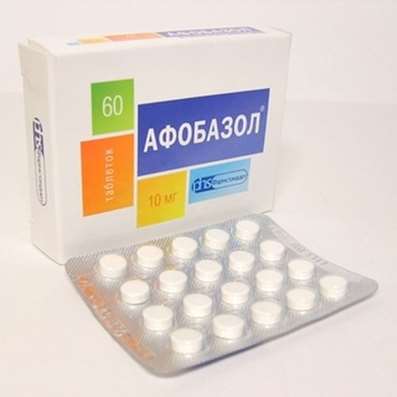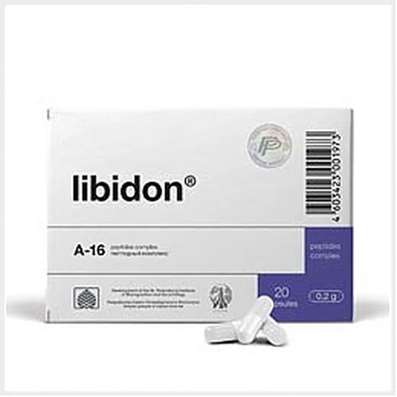Phenibut (Aminophenylbutyric acid) tablets - Instructions for Use, Dosage, Side Effects, Reviews
22 Mar 2017
Synonyms: Anvifen, Fenibut, PhGABA, Noofen.
Active substance: Aminophenylbutyric acid (4-Amino–3-phenylbutyric acid).
ATC - N05BX Other anxiolytics.
Pharmacological group - Nootropics; Anxiolytics.
Phenibut (fenibut, phenybut; brand names Noofen and Citrocard), contracted from β-phenyl-γ-aminobutyric acid (β-phenyl-GABA), is a central depressant and analog of the inhibitory neurotransmitter γ-aminobutyric acid (GABA), or a GABA analogue. The addition of a phenyl ring allows phenibut to cross the blood–brain barrier. Phenibut was developed in the Soviet Union in the 1960s, and has since been used there as a pharmaceutical drug to treat a wide range of ailments, including posttraumatic stress disorder, anxiety, depression, asthenia, insomnia, alcoholism, stuttering, and vestibular disorders, among other conditions. In some other parts of the world, phenibut is not approved for clinical use, and is instead sold as a nutritional supplement. It has been reported by some researchers to possess nootropic actions for its ability to improve neurological functions, medical citation needed] but others have not observed these effects. It is generally accepted that phenibut has anxiolytic effects in both animal models and in humans.
Phenibut is a close structural analogue of GABA, as well as of baclofen (β-(4-chlorophenyl)-GABA), pregabalin (β-isobutyl-GABA), and GABOB (β-hydroxy-GABA). Phenibut is believed to act as a selective GABAB receptor agonist; studies are conflicting as to whether phenibut also acts as a GABAA receptor agonist. More recently, phenibut has been found to act preferentially as a blocker of α2δ subunit-containing voltage-gated calcium channels, similarly to gabapentin and pregabalin. As such, by definition, phenibut is a gabapentinoid.
Nosological classification (ICD–10)
F40.2 Specific (isolated) phobias;
F41 Other anxiety disorders;
F41.1 Generalized anxiety disorder;
F48 Other neurotic disorders;
F51.0 Insomnia inorganic etiology;
F95 Tics;
F98.5 Stuttering [ hesitation ];
G47.0 Disorders sleep and maintaining sleep [ insomnia ];
H81.0 Meniere’s Disease;
H81.9 Violation of vestibular function, unspecified;
R53 Malaise and fatigue;
T75.3 Motion sickness motion;
Z100 * Chapter XXII Surgical Practice.
Phenibut (Aminophenylbutyric acid) Composition, structure and packing
Tablets are white or white with a slightly yellowish tint flat cylindrical form.
Phenibut (Aminophenylbutyric acid) Pharmacological action
Nootropic agent is gamma-amino-beta-phenylbutyric acid hydrochloride. Facilitates the GABA-mediated neurotransmission in the CNS (direct effects on GABA-receptors) also has anxiolytic, psychostimulant, antiplatelet action and antioxidant.
Improves the functional state of the brain due to the normalization of tissue metabolism and effects on cerebral blood flow (increases the volume and the linear velocity of cerebral blood flow, reduces the tone of cerebral blood vessels, improves microcirculation, has antiplatelet effect). Contributes to the reduction or disappearance of feelings of anxiety, tension, anxiety and fear, normalizes sleep, has some anticonvulsant effect.
No effect on cholinergic and adrenergic receptors.
Lengthens and shortens the latency period duration and severity of nystagmus.
Reduces the appearance of fatigue and vaso-vegetative symptoms (including headache, a feeling of heaviness in the head, sleep disturbances, irritability, emotional lability), enhances mental performance.
Improves mental performance (attention, memory, speed and accuracy of sensory-motor reactions).
In exchange reception improves physical and mental performance, improves memory, normalizes sleep, improves the condition of patients with motor and speech disorders. Patients asthenia from the first days of therapy improves health, increases the interest and initiative (motivation activities) without sedation and arousal. When applied after severe head injury increases the number of mitochondria in perifocal areas and improves the course of bioenergetic processes in the brain.
When neurogenic lesions of the heart and stomach normalizes lipid peroxidation. In the elderly does not cause congestion and excessive lethargy, relaxing aftereffect often absent. Improves microcirculation in the tissues of the eye, reduces the inhibitory effect of ethanol on the CNS. Low toxicity.
Pharmacokinetics
High absorption, penetrates well into all tissues of the body and through the BBB (brain tissue penetrates about 0.1% of the administered dose, and in the young and the elderly are much more). Evenly distributed in the liver and kidneys. Metabolized in the liver - 80–95%, pharmacologically inactive metabolites. Not accumulates. After 3 hours, the kidneys begins to stand, the concentration in the brain tissue is not reduced and it is found in the brain for an additional 6 hours About 5% is excreted by the kidneys unchanged, partly - in the bile.
Phenibut (Aminophenylbutyric acid) Dosage
Phenibut used inside after eating 2–3-week course. Adult drug administered 250–500 mg 3 times a day. If necessary, the daily dose is subsequently increased up to 2500 mg. Children from 2 to 8 years Phenibut appoint 50–100 mg, from 8 to 14 years - 250 mg 3 times a day. A single maximum dose in adults is 750 mg, in patients older than 60 years - 500 mg for children up to 8 years, 150 mg, 8 to 14 years - 250 mg.
For relief of alcohol withdrawal syndrome Phenibut appointed in the first days of treatment on day 250–500 mg 3 times a day and 750 mg at night, with a gradual decrease to the usual daily dose for adults.
For the treatment of vertigo in vestibular dysfunction and Meniere’s disease Phenibut prescribed to 250 mg 3 times a day for 14 days.
For the prevention of motion sickness Phenibut take a dose of 250–500 mg once daily for 1 hour before starting pitching, or at the first light motion sickness. Antiseasick Phenibut effect increases with increasing dose. Upon the occurrence of pronounced symptoms of motion sickness (vomiting, etc.) into a destination of Phenibut ineffective even at doses of 750–1000 mg.
Phenibut (Aminophenylbutyric acid) Overdose
Phenibut well tolerated by patients, in case of overdose is not observed serious side effects requiring discontinuation of the drug.
Phenibut (Aminophenylbutyric acid) Drug Interactions
Extends and enhances the action of sleeping pills, narcotic analgesics, antiepileptics, antipsychotics and anti-Parkinsonian agents.
Phenibut (Aminophenylbutyric acid) at Pregnancy and lactation
With caution used in pregnancy, during lactation.
Phenibut (Aminophenylbutyric acid) Side effects
CNS: increased irritability, agitation, anxiety, dizziness, headache, drowsiness.
From the digestive system: nausea (at first receptions).
Allergic reactions: skin rash, itching
Phenibut (Aminophenylbutyric acid) Indications
Asthenia and anxiety and neuroticism, anxiety, fear, obsessive-compulsive disorder, psychopathy. Stuttering and tics in children, enuresis. Retention on the background of myelodysplasia. Insomnia and nightmares in the elderly. Prevention of anxiety arising prior to surgery and painful diagnostic studies (premedication).
Meniere’s disease, vertigo associated with dysfunction of the vestibular apparatus of various origins (including at otogenny labyrinthitis, vascular and traumatic disorders), prevention of motion sickness when kinetosis.
Primary open -angle glaucoma (in combination therapy).
As adjunctive therapy in the treatment of alcoholism (for relief and psychopathological disorders in somatovegetativnyh withdrawal syndrome).
Treatment predeliric and delirious states in alcoholism (in combination with conventional means of detoxication).
Phenibut (Aminophenylbutyric acid) Contraindications
Hypersensitivity to Phenibutum.
Phenibut (Aminophenylbutyric acid) Cautions
C wary of erosive and ulcerative lesions of the gastrointestinal tract, liver failure.
With prolonged use is necessary to monitor liver function and peripheral blood picture.
Ineffective when expressed phenomena of motion sickness (including uncontrollable vomiting, dizziness).
Effects on ability to drive vehicles and management mechanisms
During the period of treatment should refrain from potentially hazardous activities that require attention and speed of psychomotor reactions.
Phenibut (Aminophenylbutyric acid) Reviews
Helga, 27 years, Nootropics Phenibut - To become a better memory.
It applies to the nootropics and tranquilizers, but since I had to buy without a prescription, the effect of tranquilizers components is very easy, there is no hypnotic effect. Only light calming effect.
What I liked this medication?
Improves cerebral circulation.
It improves memory.
Eliminates irritability.
Reduces sexual arousal.
It improves quality of sleep.
I prescribe this course, in this case one month. I am very pleased. My son almost lost nervousness, irritability ...
The drug he takes this in conjunction with pikamilon and glycine. But these drugs son and previously subscribed to, so I have something to compare ...
Irene, 37 years, Nootropics Phenibut - saves me from stress and depression.
Causes of stress and depression are different. The first time I was faced with a similar condition when I died folder. First, a long time crying, and then went into a deep depression. And time, as though, refused to treat me. I was not happy with the little daughter, irritated beloved husband ... I understand that with this condition it is necessary to do something. It suffered not only I, but all my relatives.
I make myself an appointment with a neurologist. Doctor in our out-patient department - an experienced woman, and, obviously, a lot to see. Inspections and questioning me, she immediately appointed Phenibut.
The medicine tablets. Not bitter, and sour taste.
I accept this remedy for a month, but already on the second day of admission was relieved. Out lump from his throat, adjusting sleep, irritability disappeared.
This medication really helped me. I think that it helps in other situations, such as if the difficult situation, and you need peace of mind and clarity of mind. Therefore box of phenibut I have always with you.

 Cart
Cart





